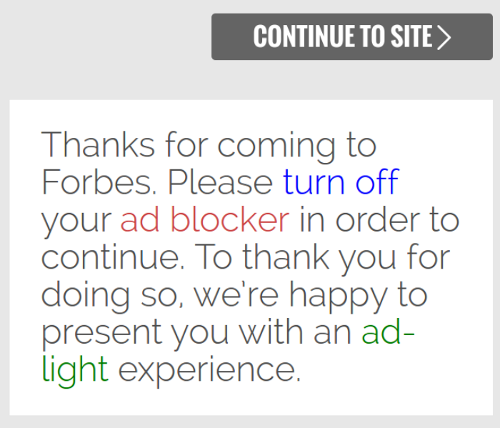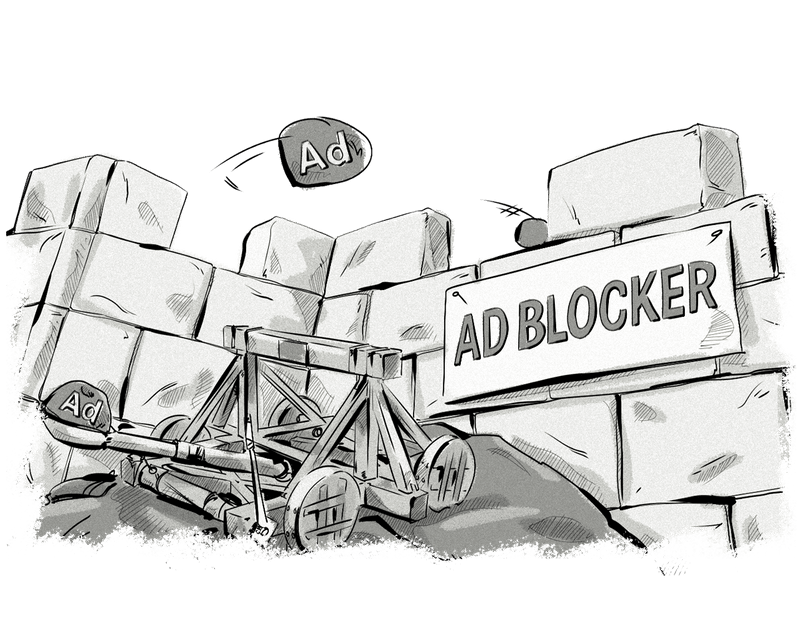Ad blockers have made a lot of people really nervous. The group that’s really sweating is publishers – and rightly so. A recent report by Adobe and PageFair highlights the global growth of ad blockers and the financial impact it has on the online advertising industry.
Many fear that this sudden rise in the use of ad blocking software will severely hamper the online advertising industry and in many ways their fears seem justified.

But there are some things that publishers (and advertisers) can do to counter this trend.
First, it is important to understand how ad blocking works.
How Do Ad Blockers Work?
Ad blockers may use different techniques to discover and prevent an ad from being shown. In examining how they do this, we may also find ways to improve the system – and ultimately, make ad blockers less of a problem.
One big problem is the fragmentation of the digital advertising landscape.
There is literally a whole plethora of platforms communicating back and forth (data management platforms to demand-side platforms to ad exchanges, supply-side platforms and ad exchanges, ad networks and ad servers).
The result is that every time a creative is served, the different platforms must communicate between themselves:
- Browser to ad server via ad request
- Ad server redirects the browser to the SSP that sends the bid request to the bidders
- SSP returns an ad markup that loads the creative from the winning DSP’s ad server
- Browsers loads the creative from the CDN
And so on…
All of this communication is, of course, marked very specifically using ad tags so that the different players can “pass control” each other.
Anytime it detects a domain in its list to block, it swoops in to do its job. It can also jump in after detecting communication containing “adsense” or “ad” or other term that fits its definition of an ad-serving component.
Alternatively, ad blockers may “hide” a creative – even after it has been loaded on a page.
This usually works by blocking any elements with labels that give a clue that they are used for advertising purposes, for instance: class/id=”ad”.
What Can Publishers Do About Ad Blockers?
Despite the doom and gloom about the rise in ad blocker usage, there are several options open to publishers.
As mentioned already, a large percentage of ad blocking software works by detecting the communication between the browser and ad-serving platforms (SSP, ad servers/networks, etc.).
Incidentally, media that is bought and sold in these kinds of situations is also the most likely to be “intrusive” or “jarring” for customer experience (since theoretically, any advertiser may advertise on any publisher site).
With this in mind, publishers may choose to look at things from the customer’s perspective when dealing with ad blockers.
Get More Creative or Go Native
The wake-up call ofad blockers could potentially help publishers become more customer-focused.
First of all, it could mean something as simple as more direct communication between publishers and consumers.
Since most ad blockers provide the option to “whitelist” certain sites, publishers can use this to their advantage by just asking to be white-listed.
It could also mean a return to more direct relationships between advertisers and publishers – with creatives more aligned with regular page content. Additionally, solutions like programmatic direct, would cut out some of the middle players in the process, making ads less likely to be blocked.
Aligning ad content more with page context around them is one characteristic of native ads, and this too may be an option for publishers. Native ads are inherently less intrusive and usually located in areas that do not conflict with a visitor’s experience.
More importantly they are more likely to provide value for consumers – and again, make site visitors want to see the ad content.
The Strong Arm Method
If a publisher is big enough and popular enough – meaning that its audience really wants to view its content – it is possible to take the “strong arm” approach.
Big names like GQ, Axel Springer and Forbes have turned the tables on ad block users and prevented them from viewing any site content until they turn off their blockers.
There is evidence which suggests that this may be effective. A majority of ad block users who were surveyed indicated that they would be willing to turn them off if there was no other way to view content.
Still, this approach may not be effective in the long term and most likely won’t benefit smaller publishers. If they totally prevent ad block users from viewing their site, they will just end up going elsewhere.
On the other hand, publishers can take a lesson in the fact that if their content is engaging and desirable enough, they may be able to make people back down and accept ads anyway.
Retreat to In-App Ads
Most ad blocking occurs when internet users make use of their browser (whether desktop or mobile.)
With mobile use on the rise, the natural course is for publishers to focus on ad revenue from that area where ad blockers cannot go – mobile apps.
In-app advertising has several advantages besides the fact that it is impervious (for the moment) to ad blocking software:
- It is like subject to the loading issues that browser pages face.
- By its very nature an app has a more targeted user audience.
- App users are more likely to understand the relationship between using a free application and the need for advertising

The downside of this option is cost.
Developing a native app requires significant up-front investment as well as maintenance – which makes it an option only for the largest publishers on the market.
Strike a Deal
Finally, publishers have the option of meeting ad blocker users halfway – in other words, making a deal with them.
The Interactive Advertising Bureau (IAB) recommends several strategies for publishers to work with users of ad blockers, including two innovative approaches:
- Offering tiered access to site content
- Rewarding visitors
In the first case, publishers grant limited access to users of ad blocking software, while communicating that more in-depth access is available only after whitelisting the site or turning off the ad blocker.
Rewarding visitors – by means of credits or other elements of gamification (bonus content or perks for whitelisting) can also help build positive relationships with users – which ultimately enhances the trust between the two sides.
In every case (as the IAB points out) communication between publishers and users is key.
One specific example of this is Forbes. The premium publisher has chosen not to take the all-out, strong arm approach, instead building a user experience that features a sort of “landing-page” before page content is loaded. For non ad blocking users, this page usually features a relevant quote from a person of note, before redirecting visitors to the content they have chosen.
Those who use ad blockers are presented a choice – turn off their ad blocker and receive an “ad-light” version of the website.
The alternative, however, is no access at all.

Forbes’s willingness to communicate with its readers – as well as offer a smoother and potentially, less ad-heavy experience builds a positive feeling around the publisher.
Even More Creativity
Besides the methods mentioned above, some completely new ideas have recently emerged.
Ad Block Plus (one of the more popular ad blockers) has partnered with a service called Flattr to offer an original solution – FlattrPlus to the problem of restricted access that adblock users may face.
Those who want to support the content they have access to and avoid ads, can pay a predetermined amount through the Flattr Plus service and it is automatically (by means of an algorithm) distributed to those publishers that a user visits most often.
Once again, the key for publishers is to consider their users – and hopefully earn their trust – and financial support.
While this final option may be the most revolutionary, it points to the fact that publishes are still searching for ways to deal with the wave of adblock usage.
With the amount of revenue that they stand to lose from total ad blocking, it’s clearly a worthwhile search.
Questions, queries, comments?
Join the conversation about this post on Facebook, Twitter, and LinkedIn.







